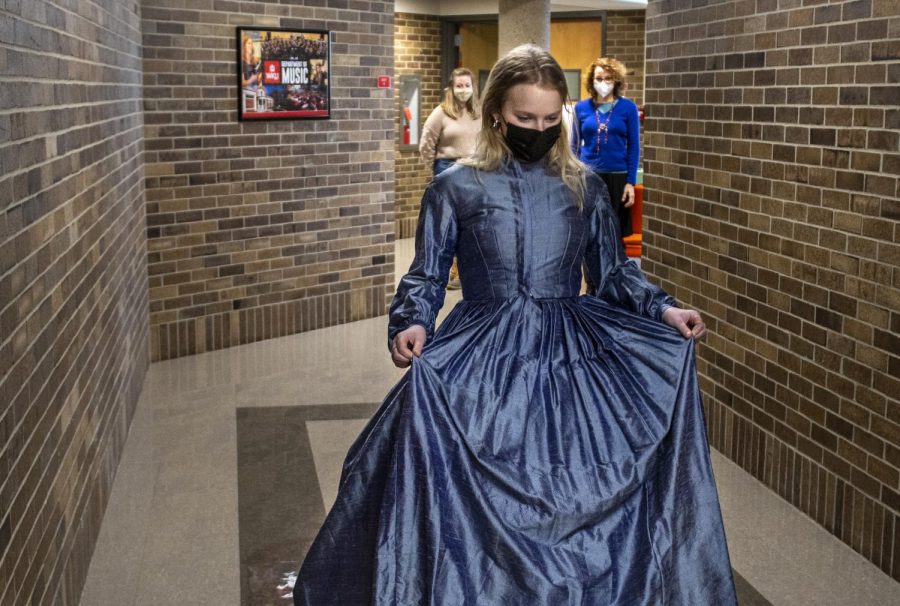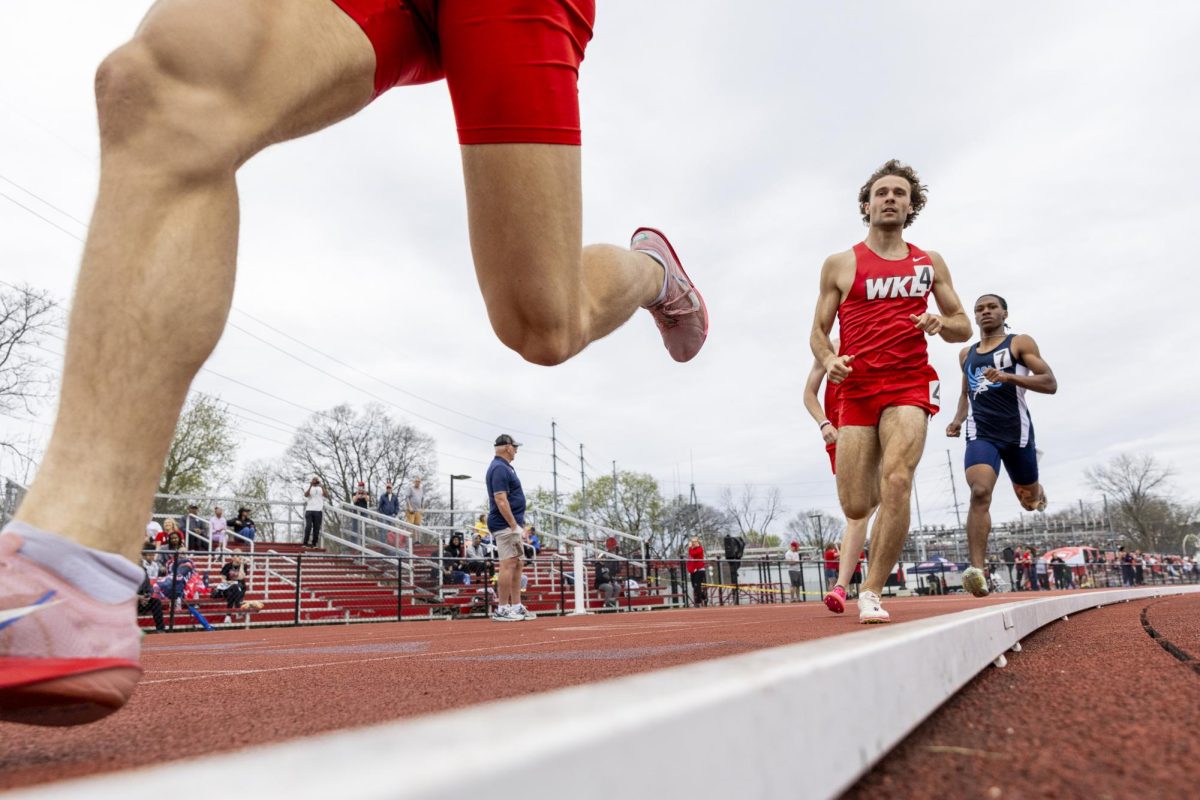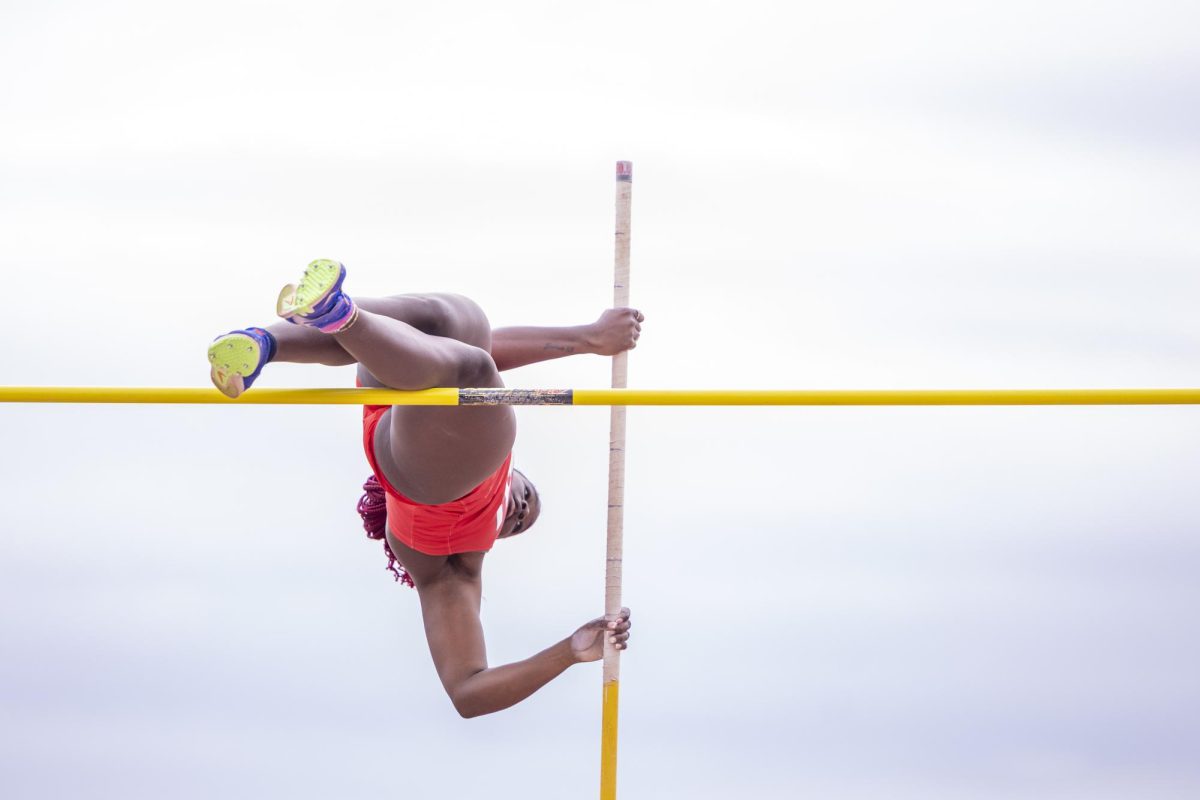‘It’s about subtle, realistic flavor’: ‘Little Women’ costume designers illustrate time periods, character growth
Sarah-Kate Wiseman, a freshman from Louisville, practices walking around the halls of the Ivan Wilson Fine Arts Center in a dress she’ll wear for the WKU theater department’s production of Little Women, in which she’ll play Amy March. She had to practice a gliding motion with her feet in order to not trip over the dress. This will be Wiseman’s first time performing with the theater department.
February 23, 2022
“Little Women,” the Broadway musical, will be performed at Van Meter Hall on April 1-3 as a co-production between the WKU Theatre and Dance Department and the WKU Department of Music.
The show tells the story of the four March sisters, centering around Jo, the writer, illustrating how they grew into a post-Civil War America while maintaining their familial bond. The show switches between both the present as well as flashback scenes, which creates the need for costumes to differentiate not only between the characters, but between time periods.
The musical is set in the 1860s, and as the spring musical, the show will feature a large cast–two things that have led to a challenging, yet rewarding task for the costume designers.
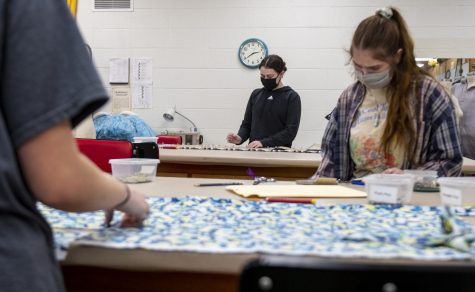
Shura Pollatsek, professor of costume design and technology, spoke on her experience so far working on the show and where costume design and development is heading for the production.
“Some of our shows are set in a specific time period, and some things are more objective and some things might be based on a time period, but the realism is not that important,” Pollatsek said. “A show like Little Women is based on a real historical person who lived in the 1860s. We’re not going for full out realism in the musical, because we’re hopping around from different times and locations so neither the scenery or costumes can do that. We’re not realistically portraying history, but we want to suggest a realistic portrayal of history.”
Pollatsek worked professionally as a costume designer in New York for 12 years and has been working at WKU for the past 15 years as a professor. She has been involved in designing for WKU Theatre and Dance productions for her entire stay on the Hill and has seen some slight differences in working on “Little Women” compared to her multitude of other shows.
“For this show it’s about subtle, realistic flavor,” Pollatsek said. “People may notice the costumes because of hoop skirts or this or that, but it’s not the kind of show where people are sitting there thinking about the costumes. There are other shows where the costumes are a more overt part of the show, where it’s a little more front and center.”
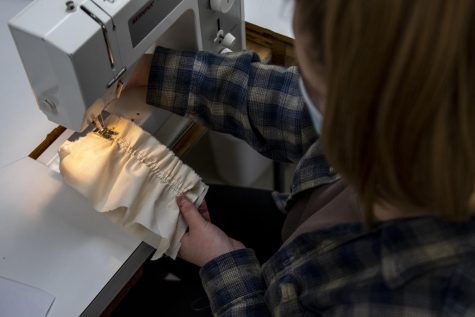
Because Little Women has such a large cast, not all of the costumes are being made from scratch, and designs are coming from alterations on costumes they already have, as well as rented costumes from larger storage areas. Pollatsek explained how this aspect of this show has been one of the most challenging.
“The biggest challenge for this show is honestly just getting enough stuff and keeping track of all of it,” Pollatsek said. “Now we’re in the preliminary level of the broad strokes, basically just getting clothes on people’s bodies, then we go back with a second layer and fill in the details. That’s actually a skill costume designers need to learn – it’s not just about making a lead stand out, it’s also about making a group look like a group.”
The costuming of this show has multiple goals. Two of those lie in basic storytelling and character development, as Pollatsek gave a specific example of demonstrating a change in maturity through clothing.
“Some of it is just storytelling to help the audience follow the story, and in general the costumes are helping us see the passage of time,” Pollatsek said. “Some of it is just showing the different characters – for example, we see Amy grow up, so there’s the difference when we first see her versus later when she’s a more mature woman. We want to see that she looks very different.”
Pollatsek also explained the more subtle goal of the costuming within the show–to build on the connections between the characters using costume tones and colors.
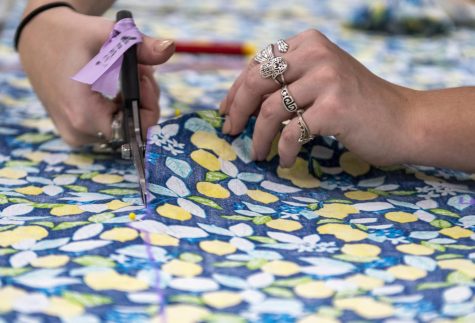
“I think the other thing is a little subtler – the story is about the closeness of the March sisters, and that’s really a through line,” Pollatsek said. “We see them going about their lives and then towards the end, Jo, as she becomes a writer, realizes that what is important to her is her family and her sisters. So ti show the closeness and the warmth of the March family is really important. Especially with costumes, we decided to use subtle warm tones and colors as an overall feeling for the March family. [The audience] should be getting that sort of coziness and warmth from those scenes.”
Sophomore Atlas Mendoza, assistant costume designer, spoke on his experience with finding his passion for costuming.
“… being able to be a part of making this performance and work of art happen, I fell in love with that,” Mendoza said. “I liked how clothes specifically make a performance and can tell you a lot about the person, the character and the play in general. Out of everything that I love about theatre, costumes are the thing that I hold the most passion for.”
This is Mendoza’s first production as a costume designer, but has done WKU shows in the past with roles within stage management. He explained the different work environment that comes with costuming.
“You get more freedom and more ‘let’s see if this can work’, instead of just following directions from the director,” Mendoza said. “Especially with the director of “Little Women,” he’s given the costume team a lot of creative freedom and has agreed with all of our ideas, something we really appreciate. It’s just really fun seeing everything come together.”
He agreed that there are some challenges with the costuming in “Little Women,” specifically within the connection to the show’s time period as well as the large cast.
“I think because it is a period piece it is very hard to find things that are particularly 1860s, so in the costume storage you can only get so much from that or you can only tweak a costume so much to make it look like it fits in the period,” Mendoza said. “I think it’s less designing the costumes and more getting them to fit. It’s also a really big show, it’s like 100-plus costumes that we have to put together.”
Mendoza’s goal with the costumes is not only to help the show feel complete and to help the symbolic message of the story be better understood, but to connect with every aspect of theatre design.
“I hope to connect to the director’s vision of the story and that it can go to another level with the costumes,” Mendoza said. “I want the audience not to be like, ‘oh, that was an amazing costume’, but more, ‘I love how every single element of the design, the set, the lighting, the costumes, the sound, they all just fit together.’”
News Reporter Alexandria Anderson can be reached at alexandria.anderson337@topper.wku.edu.


